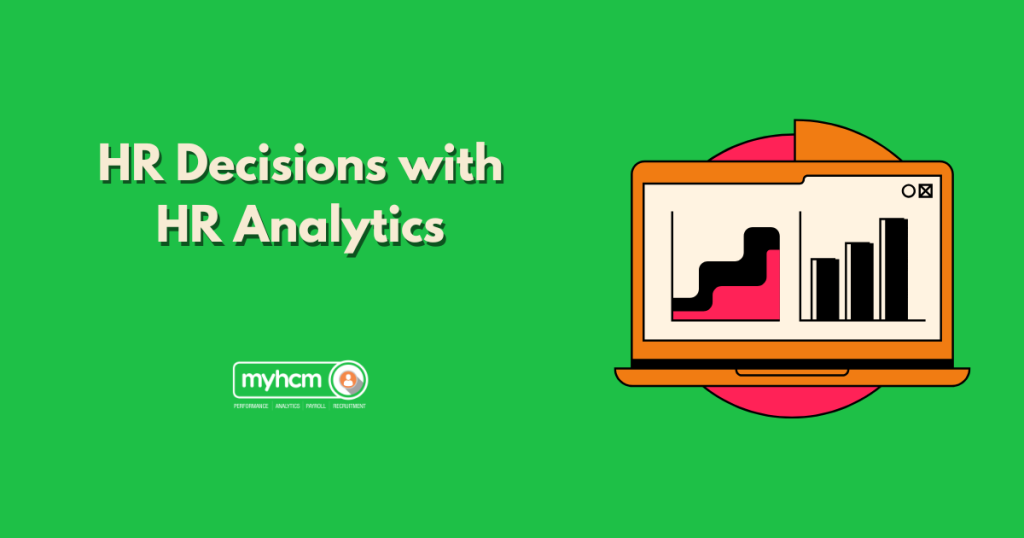HR analytics is revolutionizing the way organizations approach decision-making in human resources. It is introducing a data-driven perspective that replaces traditional guesswork with actionable insights. By harnessing it’s power, HR teams can delve deeper into workforce trends, performance metrics, and employee behaviors. It facilitates to make decisions that are not only informed but also strategically aligned with overarching business goals. This transformative approach empowers organizations to optimize their workforce management, improve employee engagement, and drive overall business success. In this article, we will explore the profound impact of it on decision-making processes. We will also explore, how it has become an essential tool for organizations aiming to stay competitive in today’s rapidly evolving business environment.
Understanding HR Analytics
It refers to the systematic process of collecting, analyzing, and interpreting human resource data. Which enable more informed and strategic decision-making. This approach involves leveraging statistical techniques, data mining tools, and advanced analytics. It uncovers meaningful patterns, trends, and correlations within employee-related data. By gaining a deeper understanding of these insights, HR teams can pinpoint specific areas that require attention. They can also address challenges effectively, and optimize their HR strategies to align with organizational objectives. Ultimately, it serves as a powerful mechanism to enhance workforce efficiency, boost employee satisfaction, and drive overall organizational success.
The Power of Data-Driven HR Decisions
Data-driven HR decisions are more accurate and effective than those based on intuition or gut feelings. By analyzing HR data, organizations can identify key performance indicators (KPIs) and track progress over time. This enables them to measure the impact of HR initiatives and make adjustments as needed.
Key Areas Where HR Analytics Makes a Difference
HR analytics can be applied to various areas of HR, including:
- Recruitment and Talent Acquisition: It can help identify the most effective recruitment channels, assess the quality of candidates, and predict future hiring needs.
- Employee Performance Management: By analyzing performance data, HR teams can identify top performers, identify areas for improvement, and develop targeted training programs.
- Employee Engagement and Retention: It can help measure employee satisfaction, identify factors that contribute to turnover, and implement strategies to improve retention.
- Compensation and Benefits: By analyzing compensation data, HR teams can ensure fair pay practices, identify pay gaps, and optimize compensation packages.
- Workforce Planning: It can help forecast future workforce needs, identify potential skill gaps, and develop succession plans.
Implementing HR Analytics in Your Organization
To effectively implement HR analytics, organizations should follow these steps:
- Define Your Goals: Clearly articulate the specific business problems you want to solve with it.
- Gather and Clean Your Data: Collect relevant HR data from various sources, such as HRIS systems, performance management tools, and survey data.
- Choose the Right Tools: Select appropriate tools to analyze your data, such as Excel, SQL, or specialized software.
- Analyze Your Data: Use statistical techniques and data visualization tools to uncover insights from your data.
- Communicate Your Findings: Share your findings with key stakeholders, including HR leaders, business managers, and employees.
- Make Data-Driven Decisions: Use the insights gained from it to inform strategic HR decisions.
Conclusion
HR analytics is an invaluable tool that empowers organizations to make well-informed, data-driven decisions in their human resource strategies. By effectively leveraging data, HR teams can streamline processes, enhance operational efficiency, and optimize resource allocation. Ultimately leading to significant cost savings. Moreover, it provides deep insights into employee behaviors, preferences, and challenges. Enabling organizations to implement targeted initiatives that boost employee satisfaction and engagement. Embracing it not only equips organizations to stay ahead of industry trends. It also fosters a proactive approach to workforce management. It ensures sustainable growth and a competitive edge in an ever-evolving business landscape.

Pingback: Useful HR Analytics - Blogs - MyHCM